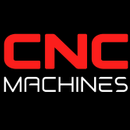CNC Machining vs. 3D Printing over a decade later

The 2012 3D Printing Hype: Over a Decade Later, CNC Machining Still Reigns
In 2012, 3D printing emerged as a transformative technology, promising to revolutionize the manufacturing landscape and potentially replace traditional CNC (Computer Numerical Control) machining. A decade later, however, CNC machining remains a vital part of the manufacturing industry. This article explores the hype surrounding 3D printing in 2012, the realities that followed, and offers a comprehensive comparison of 3D printing versus CNC machining.
The 2012 Additive Manufacturing Hype
The early 2010s saw a surge in 3D printing enthusiasm. The technology was celebrated for potentially democratizing manufacturing by enabling individuals to create complex parts from desktop devices. This period witnessed the rise of consumer-friendly printers, with companies like MakerBot gaining attention. Policymakers also recognized this potential, with initiatives like America's 'America Makes' emphasizing a shift toward additive manufacturing.
The Reality: Limitations of 3D Printing
Despite early enthusiasm, several challenges prevented 3D printing from replacing CNC machining:
- Material Constraints: Initially limited to plastics, 3D printing's material range did not align well with industries reliant on metals or composites.
- Surface Finish and Precision: Additive manufacturing parts often displayed visible layer lines, lacking the smooth finish typical of CNC machined parts.
- Production Speed: 3D printing processes were slower, especially unsuitable for high-volume production needs.
- Structural Integrity: Some 3D printed parts did not match the durability and strength offered by subtractive methods.
These limitations illustrate why 3D printing carved its niche in prototyping rather than fully replacing CNC machining.
CNC Machining: The Enduring Workhorse
CNC machining remains indispensable, celebrated for its:
- Material Versatility: Capable of processing metals, plastics, and composites, CNC machining meets diverse industry requirements.
- High Precision: Vital for aerospace, automotive, and similar industries that demand exacting tolerances.
- Surface Finish: Often requires no post-processing, thanks to its ability to produce smooth, ready-for-use surfaces.
- Scalability: Effective for both small batch and mass production, maintaining consistent quality.
Comparative Analysis: 3D Printing vs. CNC Machining
| Aspect | 3D Printing | CNC Machining |
|---|---|---|
| Process | Additive (builds layer by layer) | Subtractive (removes material) |
| Material Range | Limited (primarily plastics, some metals) | Broad (metals, plastics, composites) |
| Precision | Moderate | High |
| Surface Finish | Often rough, may require post-processing | Smooth, often ready for use |
| Production Speed | Slower, especially for large volumes | Faster, suitable for mass production |
| Complex Geometries | Excellent for intricate designs | Limited by tool access |
| Cost Efficiency | Cost-effective for prototyping | More economical for large-scale production |
While 3D printing excels in prototyping and complex geometries, CNC machining remains preferred for precision, durability, and scalability.
Conclusion: Complementary Technologies
Though 3D printing has not supplanted CNC machining as some envisioned in 2012, it has found its niche alongside traditional manufacturing techniques. Additive and subtractive methods each offer distinct advantages, with 3D printing ideal for design innovation and prototyping, and CNC machining excelling in precision and mass production. Understanding these strengths allows manufacturers to integrate both technologies, leveraging their combined benefits for greater manufacturing flexibility and innovation.
Keywords: 3D printing hype 2012, CNC machining, additive manufacturing limitations, subtractive manufacturing, manufacturing technologies comparison


